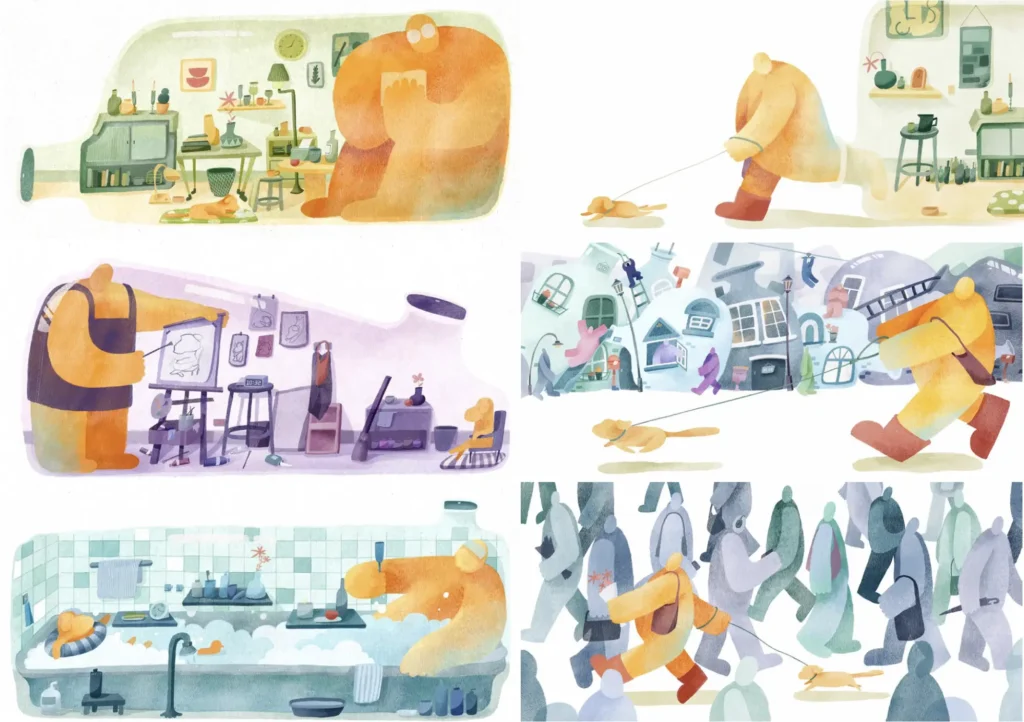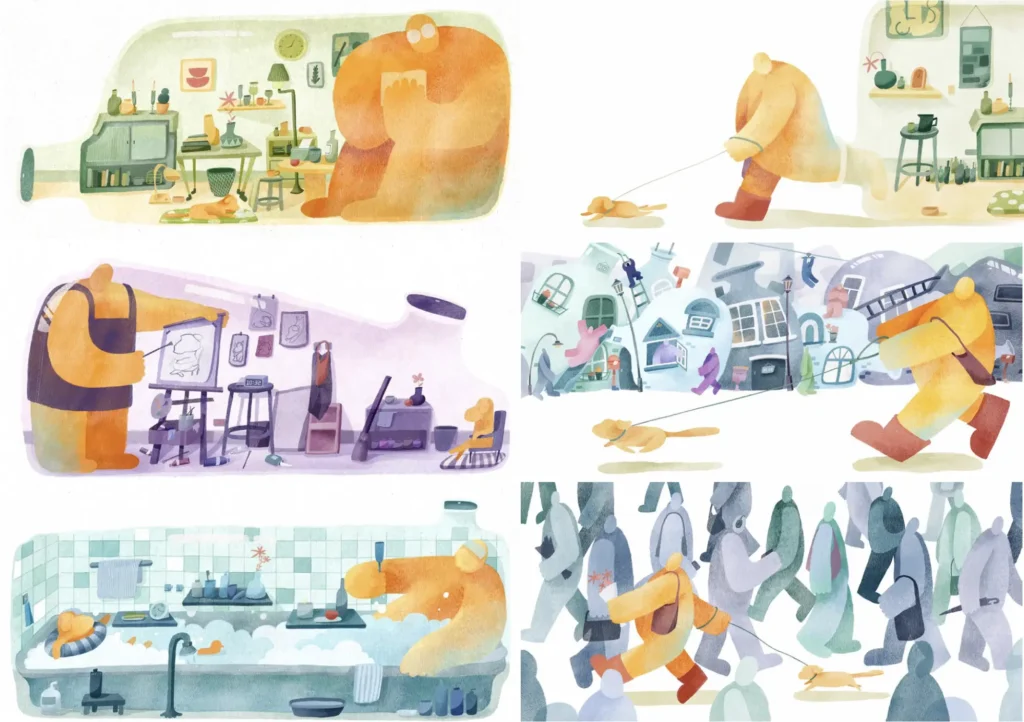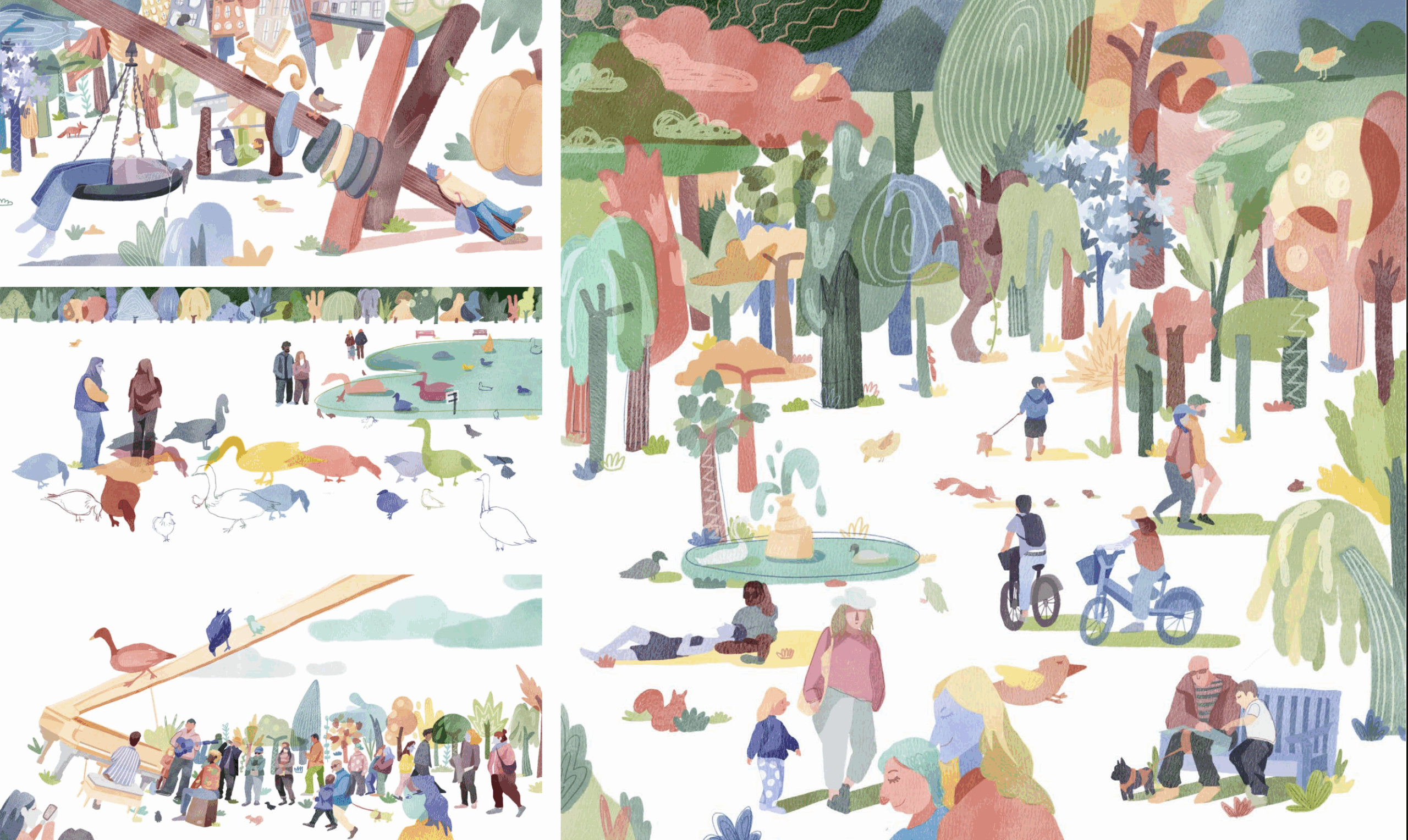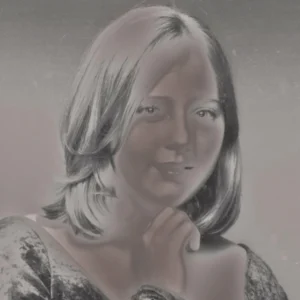Lin Ye’s Beautiful Visual Tales of Control, Identity, and Discovery


Lin Ye is an illustrator bridging continents and emotional worlds. Originally from China and now based in London, she works at the intersection of culture, childhood, and visual storytelling. Her journey into picture books began with a science title on the coronavirus, co-authored during the early days of the pandemic. The book quickly gained widespread recognition in China for its clarity and emotional sensitivity.
Seeking to deepen her craft, Lin pursued a master’s degree in children’s book illustration at Goldsmiths, University of London. Since completing her studies, her work has earned critical acclaim. She won the Illustration Commendation Award in the FAB prize held by the famous British publishing house Faber.
Expedition of Clement
In Expedition of Clement, Lin Ye crafts a visually arresting fable on education, control, and the delicate line between nurture and surveillance. Set in a quiet, symbolic forest ruled by a one-eyed god draped in moss green, the story follows two children as they are locked, quite literally, into lives shaped by their parents’ choices.
Ye’s illustrations are haunting and warm in equal measure. Her digital textures mimic hand-painted softness, and her characters hover between the whimsical and the uncanny. Their asymmetry is intentional, their gestures reserved yet telling. Keys hang like promises. Trees watch with knowing limbs. In this forest, education is not just a system but a spell cast on young minds.
The story gently unravels into a parable of divergence. One child accepts the lock, choosing a structured learning path and expected obedience. The other resists, stepping off the path, their life spiralling into curiosity, chaos, and self-guided discovery. Ye never moralizes. Instead, she observes. Her art lets the forest breathe around each choice, showing the cost of both routes, the safety of rules versus the wildness of freedom.
This is not just a book for children. It is a meditation for adult questioning where teaching ends and control begins. Expedition of Clement is Lin Ye at her most precise, emotionally attuned, narratively restrained, and visually poetic. It is a quiet masterpiece on the tension between expectation and exploration.
Your picture book Expedition of Clement explores the impact of traditional Chinese educational values. What challenges did you face in translating such a culturally specific topic into a universally understandable story, and how did you ensure it remained accessible to international audiences?
The main challenge I faced when writing Expedition of Clement was how to truly reflect Chinese education while making the story avoiding being too specific or ironic. When designing characters and plots, if people are used directly as story characters, the diversity of races may produce obvious specific meanings, limiting the reader’s understanding of the story. For this reason, I chose to use animals as characters, using allegorical narratives to abstract and neutralize cultural characteristics, so that the story can convey the universal theme of “conflict between personal ideals and external expectations” across cultures. This treatment not only helps to highlight the universality of the story, but also facilitates the understanding and resonance of readers around the world.
You’ve experimented with a wide range of illustration styles, from realism to abstraction. How do you decide which visual style best suits each story or concept you’re working on?
When I am creating a story, choosing a visual style is a decision that is closely tied to the story content. For example, for the story I Want to Be a Shark, since the setting is in an ocean full of marine life, an environment that it self has a strong visual impression, a realistic style would be more accurate in expressing the story content and avoid the misunderstandings or orientation issues that an abstract style might bring.
On the other hand, for The Expedition of Clement, this was an abstract concept based on reflections on Chinese-style education. In order to avoid the misunderstandings that might arise from direct expression, I chose to set the story in a forest, and to express the core theme vividly and vividly through the animalized protagonists and the addition of some fantasy elements, such as the mysterious key god. In this way, I was able to choose the most appropriate visual style based on the emotional and thematic depth of the story.
In I Want to Be a Shark, you look at themes of self-acceptance and identity through a blowfish character. Can you walk us through your creative process in balancing light-hearted storytelling with such an important human message?
When I was writing I Want to Be a Shark, I decided to use animals as the main characters and realistic illustrations to unfold the story after I finished writing the story. The character setting of the blowfish came from a documentary about marine life that I watched. The unique defense mechanism of the blowfish – inflating itself when in danger – aroused my interest and inspired me to choose it as the protagonist of the story. I was attracted by the unique and interesting way of survival of this creature and decided to incorporate this appreciation of individual uniqueness into the story.
I need to acknowledge the complexity of the task of balancing the light-hearted storyline with such an important human message: on the one hand, the story needs to be attractive enough for young readers to follow the plot; on the other hand, the story should not be too simplified or misleading so as not to weaken its educational significance.
To achieve this balance, I added humorous and warm dialogues and expressive character designs to the narrative, so that the story can remain interesting while also inspiring readers to think deeply about self-acceptance and identity. This approach aims to guide young readers to naturally understand and respect the uniqueness of each person while enjoying the fun of reading.
Many of your stories, like What is in the Park, are rooted in everyday moments and observations. How does your environment, particularly living in London, influence your storytelling and artistic choices?
London’s multicultural and rich artistic environment has greatly enriched my creative vision and inspired me to innovate in storytelling and character design. My illustration series What’s in the Park was born from daily walks in London’s parks. These parks are not only beautiful, but also places for social and cultural exchanges, allowing me to witness the harmonious coexistence of people from different backgrounds. This diversity deeply attracts me.
fIn particular, the scenes of musicians in the park and their animal audiences not only show the harmony between man and nature, but also greatly inspire my creativity. These observations become the source of inspiration for my creation, helping me to shape the story and convey deep educational meaning to the audience.

As someone who has received recognition from both Chinese and international institutions, how do you see your work bridging cultural perspectives in illustration and children’s literature?
As an artist recognized both nationally and internationally, I feel that I play a role in building cultural bridges in illustration and children’s literature. My work aims to attract children while promoting understanding and communication between readers from different cultural backgrounds.
However, this cross-cultural communication is not without challenges, and cultural elements must be handled accurately and sensitively to avoid misunderstandings or stereotypes. At the same time, I am aware that readers from different cultural backgrounds may have different understandings of the story, which requires me to take cultural differences into account when creating, ensuring that the story is both interesting and easy to understand. In the future, I need to continue to ensure that my work can continue to have a positive impact among different cultures around the world.
The post Lin Ye’s Beautiful Visual Tales of Control, Identity, and Discovery appeared first on Our Culture.






